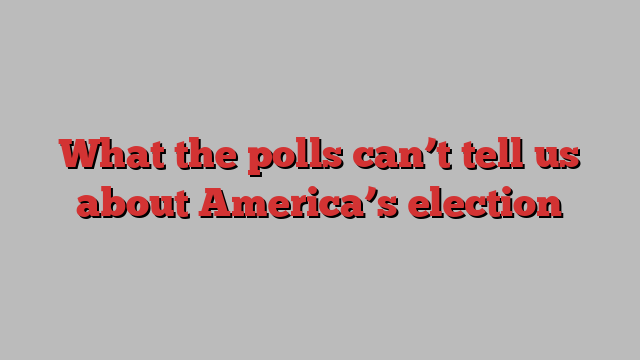
There have been 907 polls conducted by 141 pollsters regarding next month’s US presidential election between Kamala Harris and Donald Trump, according to data from aggregator FiveThirtyEight. They have been conducted online, over email, on the phone and via text message. In total, they have queried the voting intentions of 821,525 American voters, nationally and in 44 states and congressional districts.
This is the data set of our collective disquiet. It has been mapped and charted, interpreted and extrapolated, celebrated and lamented. With days until the election on November 5, it has yielded precisely the same statistical conclusion that we would have drawn with no polls whatsoever: the election is a coin toss.
I was not among those 800,000 and odds are neither were you. Yet I suspect we have both looked upon their tabulated responses with great interest and engaged in the quadrennial pastime of presidential poll-watching and prognostication — a tradition since the advent of scientific polling in 1936, when George Gallup predicted Franklin D Roosevelt’s victory. This year’s data, despite its current lack of thesis, is our modern picture window on the political world.
A particular sort of fixation on polls dominates in an election year — an obsession not with self-knowledge or social science but with prediction. Like a black hole, this fixation bends all rays of political light towards its centre. Despite the fact that polls have shown nothing but deadlock, and that they haven’t been particularly accurate in recent presidential elections, we can’t look away from them.
Pollsters spoke to me about the consumption of their product in 2024 using the language of addiction: a “need” for different, for new, for more. Patrick Murray, the director of the Monmouth University Polling Institute, told me about an analysis of hundreds of news stories mentioning his outfit’s work — 80 per cent of them concerned the horse race, while 18 per cent concerned the real issues underlying it. I am guilty of this, of course — both as a consumer and as a producer — and no doubt will be again before Election Day. Horse races are compelling by nature, and our species is nothing if not curious, including and especially about the future. But this speculation is an odd thing, distracting from the stakes of the very thing about which we’re speculating.
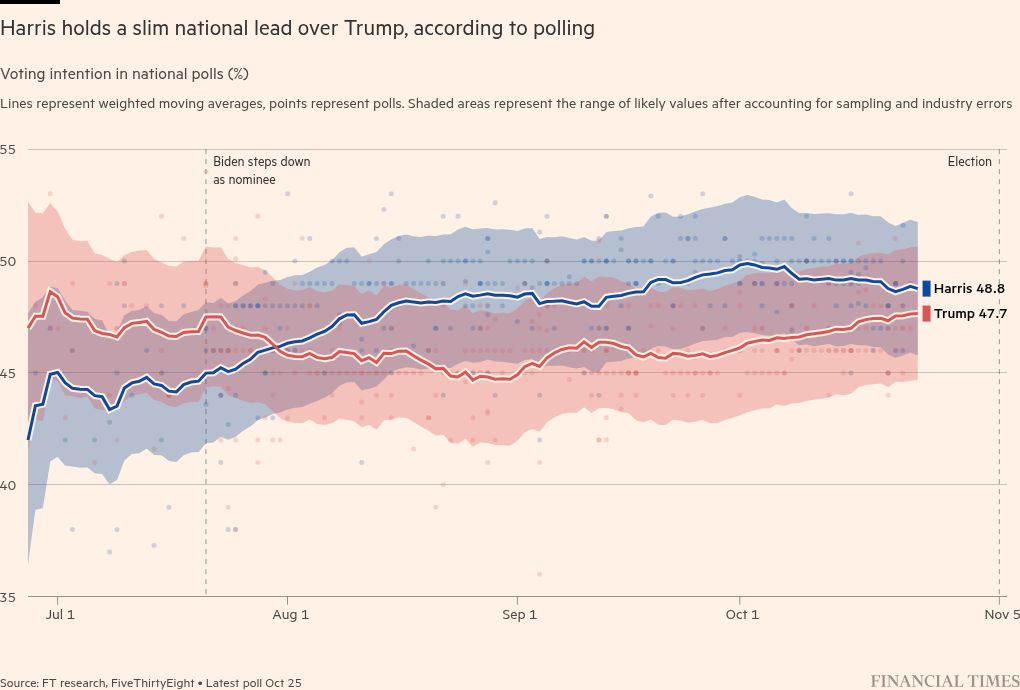
“People want that next little nugget,” says Courtney Kennedy, vice-president of methods and innovation at Pew Research Center. “Any moment there could be a new score, a new touchdown, whatever. It’s the same phenomenon.”
Electoral polls have had a rough run. In 2016, too much emphasis was placed on national-level polls, while state-level polls, crucial to understanding US presidential elections and the electoral college, were a mess. As a result, they were wrong about Trump eight years ago — not to mention Brexit in the UK. In 2020, the story was much the same — pollsters may have got the headline result right, but the systematic underestimation of Trump’s support remained.
But pollsters have been responding to their misses and to a changed world — more than a third of national pollsters adjusted how they did business after 2020, according to a Pew study. Far fewer now rely on phone calls, for example, more use online and text surveys, and more have turned to probability-based panels, a method of sampling random Americans using addresses from the US Postal Service. And the 2022 midterm polls, for their part, despite the contrarian partisan polls that predicted a “red wave”, were quite accurate. Perhaps this year’s have been too.
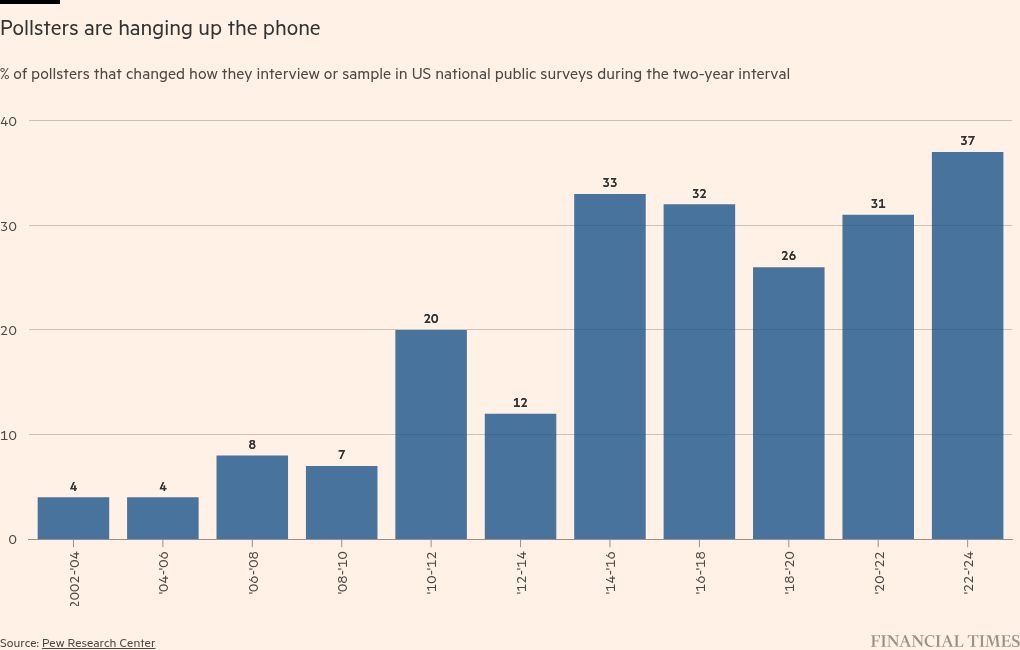
This election, we eager poll-watchers have another flourishing species to obsess over: exotic derivatives of polls and campaigns called prediction markets. Prominent of these are PredictIt, Kalshi and the crypto-based Polymarket, where more than $2bn has been traded on the presidential market. Participants buy shares of events (“Trump wins”, say) which resolve at $1 if the event comes to pass and $0 if it does not. Their prices, therefore, can be read as probabilities.
FT Edit
This article was featured in FT Edit, a daily selection of eight stories to inform, inspire and delight, free to read for 30 days. Explore FT Edit here ➼
Americans have gambled on elections since George Washington and in organised markets since at least Abraham Lincoln. In the days before scientific polling, newspapers — our prediction itch being timeless — would report the gambling odds daily. Modern scholarship has found that these were more accurate than any other available source.
PredictIt and Kalshi, which now allow trading from the US, have fought prolonged battles with the Commodity Futures Trading Commission. Last year, a group of US senators wrote a letter to the commission, urging it not to allow trading of electoral contracts, calling them “a clear threat to our democracy” and warning that “the democratic process is being influenced by those with financial stakes”, as if it weren’t already. The markets argued, instead, that they are democratising financial exposure to elections and providing, like polls, valuable data on the political process.
In either case, the markets are up and running. In theory, prediction markets have potent strengths. They harness the wisdom of an incentivised crowd, they return instant results, and they are sensitive seismographs of a spasmodic campaign season. Their graphs quantify the plots of useful stories. During President Joe Biden’s July press conference at a Nato summit, for one memorable example, where he’d referred to Zelenskyy as “Putin” and speculation about his political life was rampant, these markets jittered with his every sentence. If polls come in drips, prediction-market prices come out of a fire hose.
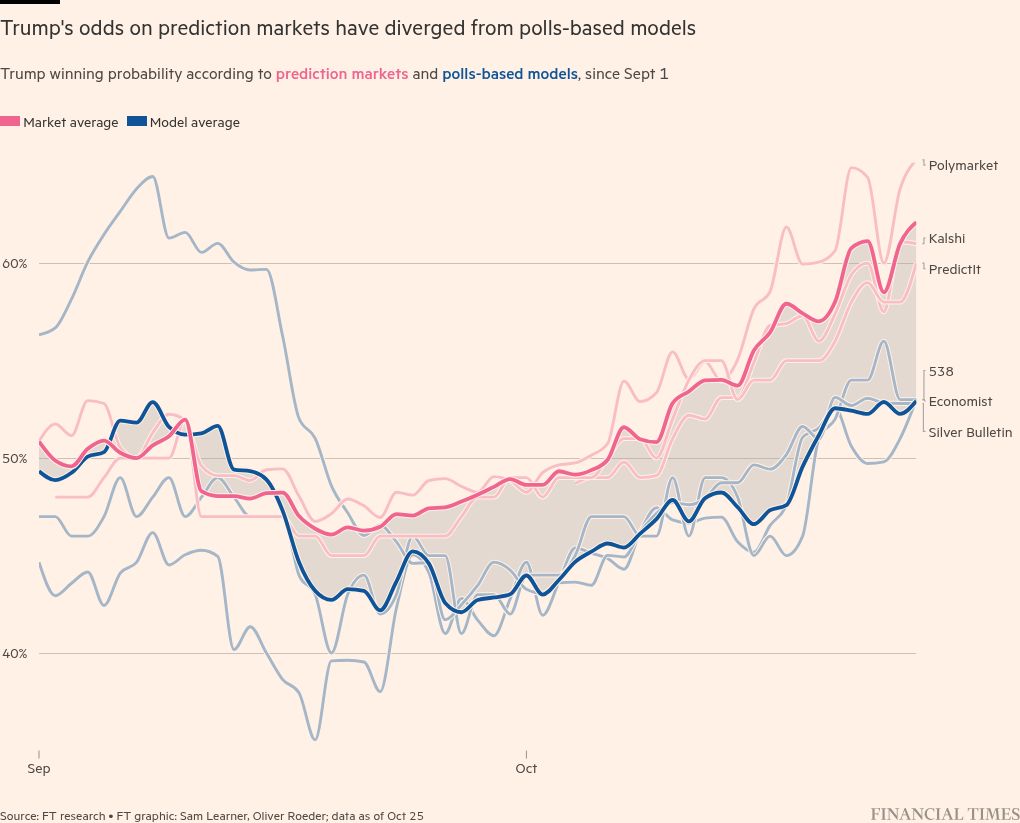
But the prices they deliver are influenced by other opaque methodologies. In recent weeks on Polymarket, for example, a mysterious trader named Fredi9999 — along with a few other, possibly linked accounts — has taken an enormously outsized pro-Trump position, essentially dictating the former president’s price. By way of explanation, Fredi9999 has insisted that he has “no political preference” and simply sees Trump as a big favourite. But internet sleuths and academic experts have suggested ulterior motives. Perhaps these traders have inside information, or are trying to affect public perception about the candidates. As with polling, it is always tricky to measure a thing without changing that thing.
Indeed, prominent rightwing personalities, including billionaire Trump-backer Elon Musk, have seized on Polymarket prices as proof of Trump’s electoral strength, or pre-emptive evidence of balloting malfeasance should he lose on November 5. In any case, as a result, Trump’s odds on prediction markets sit around 60 per cent.
To transform even excellent polls into prediction is to perform a sort of abuse, pollsters will tell you. “This is where polls start to fall apart, because they’re not designed to do that,” Monmouth University’s Murray says. Rather, they are designed, he explains — every pollster explains — as mere “snapshots in time”. They capture the pose of the electorate, on a given day, through a relatively small viewfinder, one that is perhaps a bit blurry. And some photographers are better than others.
That polls are “snapshots” does not deter anyone from using them to make predictions, nor a prominent handful from doing so professionally. A snapshot of me is a fairly good prediction of what I’ll look like on November 5, after all. A variety of enterprises — FiveThirtyEight (where I used to work), The Economist and Silver Bulletin, for example — publish explicit predictions, daily or more, based on a close quantitative reading of polls and a smattering of other data. The result is a tidy number, the gravitational singularity, ostensibly summarising the entirety of presidential political reality. As I write, the publications list Trump’s chances at 51, 53 and 53 per cent respectively.
It has been a rough run for the predictors too. They also underestimated Trump’s support in 2016, of course, and when President Biden suspended his re-election campaign in July, the forecasters suspended their models and published effectively nothing. What choice did they have? There was no Democratic candidate and therefore no polls to feed the models. One by one, they paused their machines and slapped warning labels on their sites — “Forecast suspended”. A worldview entirely reliant on surveys is of course dependent on their existence.
Add to this the squabbling, which has always existed, mainly as Twitter slap-fights, and recently crescendoed. “After years of growing strife in the nerdy reaches of election prediction,” as New York magazine described it, “this is the year there seems to be an all-against-all war among the participants.” Nate Silver, who now publishes the Silver Bulletin and used to run FiveThirtyEight, had criticised the model of his successor, G Elliott Morris, who used to run The Economist’s model, for being too bullish on Biden, saying it was “very obviously broken”. Morris defended it by arguing that fundamentals favoured the president: he was the incumbent and the economy was improving. In any case, after Biden’s departure, Morris’s model disappeared for a long stretch. When it returned for Harris-Trump, it was about where it had been, hovering near 50-50.
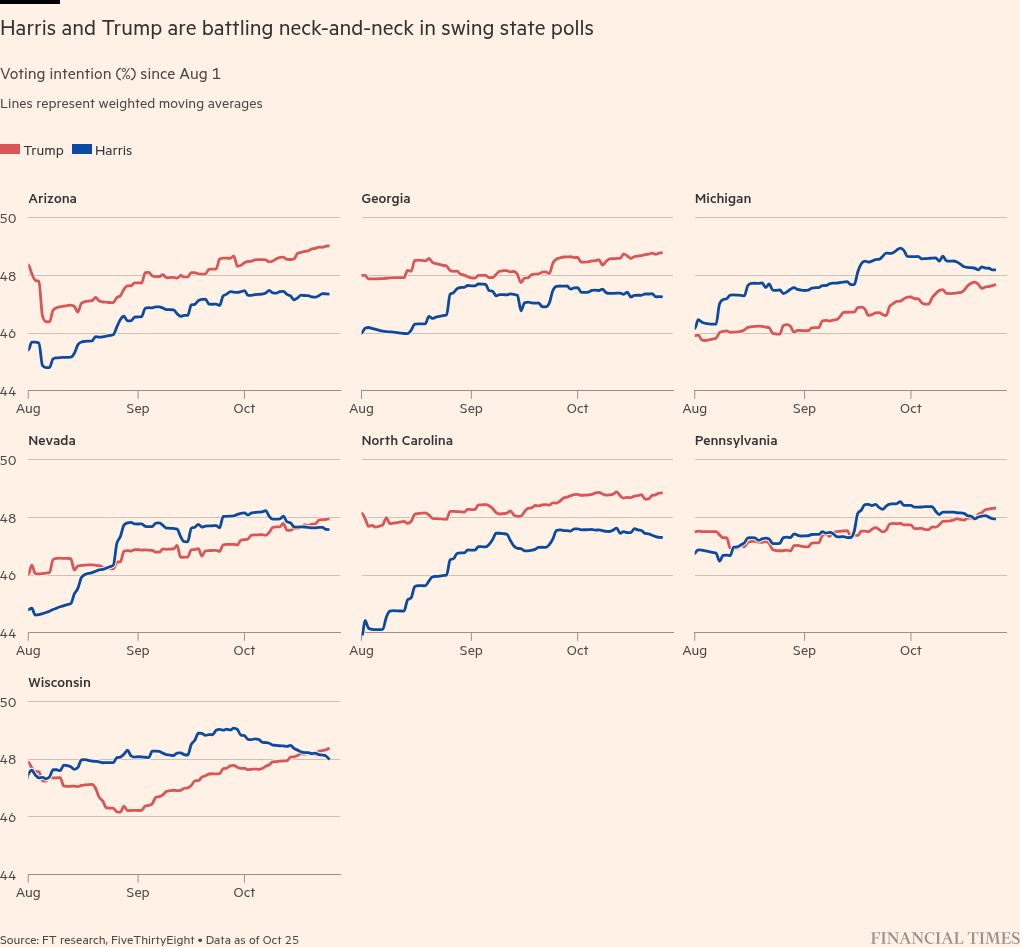
In response to separate criticism from a political scientist at Stanford (“far less precision and far more punditry”) Silver tweeted, “always happy to bet for real $$$ against boring academics who can’t model for shit and say stuff like that election forecasting is impossible”.
Sayre’s law: the fighting is so bitter because the stakes are so low. No matter how much we pore over the polls and the results, we will never know exactly why Harris or Trump won the 2024 election, and no probabilistic forecast is ever strictly “wrong”. FiveThirtyEight infamously gave Trump only a 29 per cent chance in 2016 — but 29 per cent chances happen all the time. And each polls-based model is driven by assumptions and opaque methods all its own, with just a single night every four years to check them against.
More broadly, these popular polls-dissecting sites were meant to rescue political coverage from empty punditry, in the same way sabermetrics was meant to rescue baseball from empty (and often simply incorrect) folk wisdom. In many ways, they did. They amplified and illuminated the best of polling, understood well the subtleties of statistical error and correlation and so on, and provided much-needed quantitative grounding to political media. But as the ethos spread like kudzu, its copies became steadily less vibrant than the originals, a box to be checked, at a certain expense.
“There’s a part of me that says we probably should be moving election coverage to the sports page,” Murray says. But elections are not sports, though we may follow them as such. The point is not moral but structural. In baseball, the goal is to score runs and win games, and a successful theory of how to play it need only account for that. The goals of politics extend, or ought to, far past Election Day — to governance and diplomacy and war and people, and a successful theory of how politics works ought to, as well.
Polls- and data-driven politics coverage is ubiquitous now. For example, during a recent segment on CNN, about battleground states, the anchor addressed the network’s data reporter: “You’re on because you can do math so I don’t have to.” The data reporter then proceeded to do some simple division. In another segment, the data reporter poked at a screen with data on early voting, and then begged viewers to ignore it as it was, he explained, not predictive.
The same, in turn, is true of sports, where “analytics” is now ubiquitous and gestured at like a totem. “Whose analytics are we even talking about?” Jay Caspian Kang wrote recently in The New Yorker about this phenomenon. “Are we so sure they’re correct?”
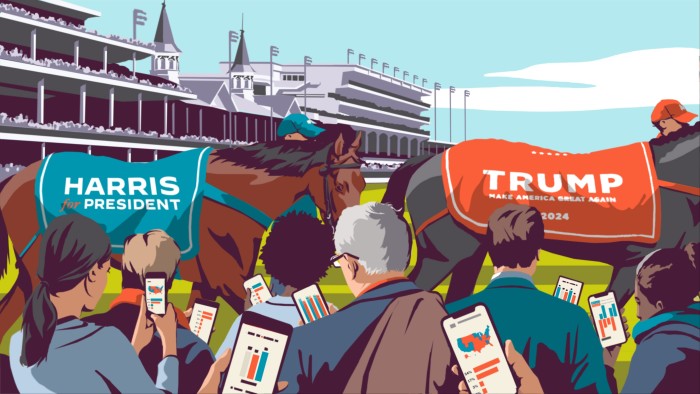
There is nothing wrong with some journalistic division of labour, with one cohort devoted to polling and prediction and another devoted to attending Trump rallies, or whatever. But an increasingly blind emphasis on polls and “analytics” comes with a heavy opportunity cost. Easily obscured by this work is the actual political — let alone equitable or moral — analysis of elections and the people they will affect. “With the politics stuff, I just like the elections part,” Silver once said. Fine, as far as it goes, but when two presidential candidates are ceaselessly associated solely with a number (“53 vs 47”) and a colour (“red vs blue”), very much else is stripped away.
All of this is exacerbated in a close election, which — 800,000 American survey respondents have taught us — this year unquestionably is. Time was that polling changed in response to events: a debate, a convention, a policy announcement, a major story. “That doesn’t happen any more,” Murray says. “Assassination attempts and all sorts of other things, and nothing’s moving the needle.” The pollster argues that cultural identities have become tightly tied to partisanship, rather than the issues that would lead us to one party or another. “It’s all about culture, and your culture doesn’t change.”
But it was precisely because the needle could move that polls and empirical forecasting projects had real value. They could draw the map that linked the real world to the electoral world, and vice versa. In that sense, they revealed something new and true about the machinery of politics, about how voters responded to leaders, and leaders to voters. Without that movement there is no project.
Consider an extreme hypothetical, not too ridiculous given the present scarcity of undecided voters, where the real world and the electoral world are entirely unlinked: precisely half the country only ever votes for one party and half only ever for the other. The only variance in polls, then, comes from statistical noise or sampling error; real-world events are electorally meaningless; and elections are decided by a hair’s breadth, determined by turnout and weather patterns in the Milwaukee suburbs, say. Telling empirical or predictive stories here is like inventing pictures in the static on a broken television screen.
So this October, we’re all standing around the polls, poking them with a stick, asking them to do something, desperate for an empirical story. In this light, recent ledes from prominent quantitative sites read like parody: “The closest election of the century keeps getting closer.”
Consider an even more extreme hypothetical: what if we paid no attention to the electoral polls at all? Nor the prediction markets? What if we went a while without the next little nuggets? What if we say stuff like election forecasting is unnecessary? What would we lose? What might we pay attention to instead?
Viewed another way, fixation on the polls looks like a deeply democratic act. Issue polling reveals truths about an electorate and its interests, and therefore defends them. In a world where polling does not exist — and in some countries it does not — those in power may claim that they alone know what the public wants, and govern accordingly. “They can make proclamations that may or may not be tethered to reality,” says Pew’s Kennedy. “There is power in this act of giving voice to people.”
It is also a communal pastime. “Polls hold a mirror up to the public,” says Murray. In the reflection we see ourselves in relation to our fellow citizens — perhaps chuffed to be in the majority, or dismayed to be outside it, but in any case part of a larger whole. In the long run, these polls colour in a social history, drawing lines between electorates’ motivations, electoral outcomes and political realities. In that sense, polls tell stories that help us understand the world.
It is an old cliché that the only poll that matters will be conducted on Election Day. But it’s true, and it will, and then the real game begins.
Oliver Roeder is the FT’s US senior data journalist
Find out about our latest stories first — follow FTWeekend on Instagram and X, and subscribe to our podcast Life and Art wherever you listen